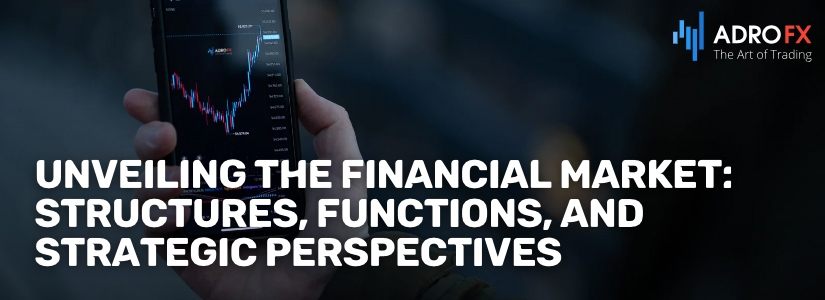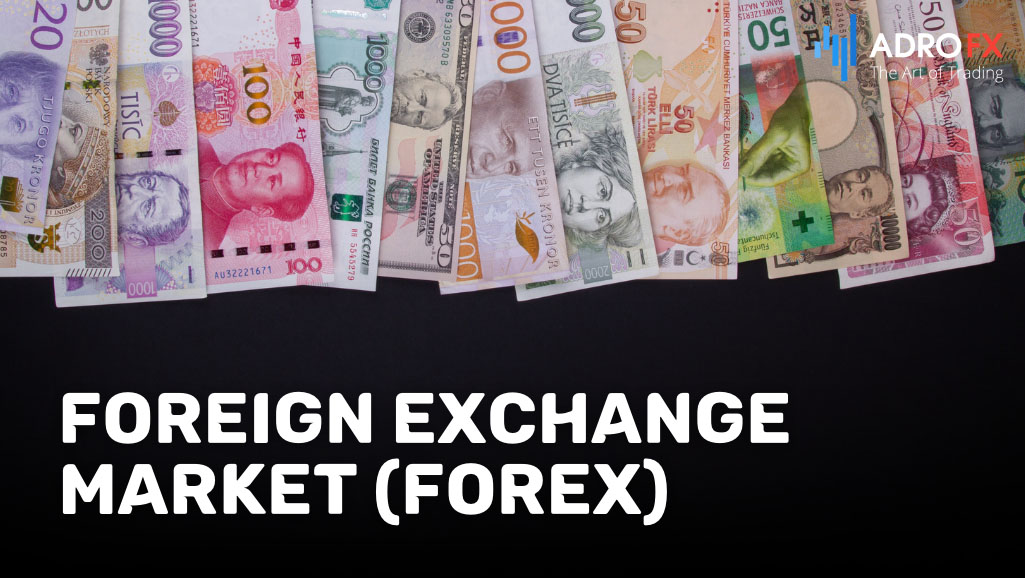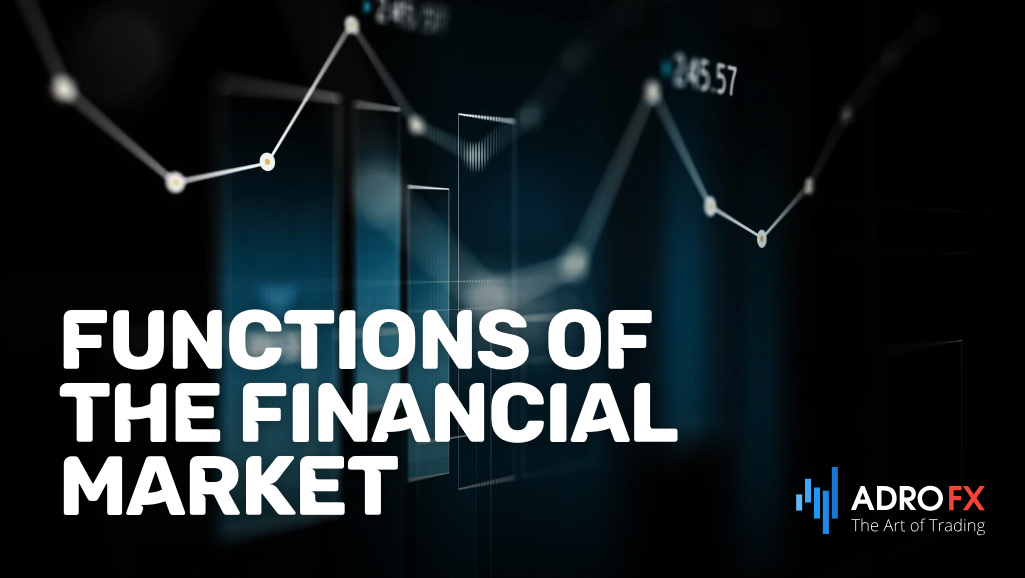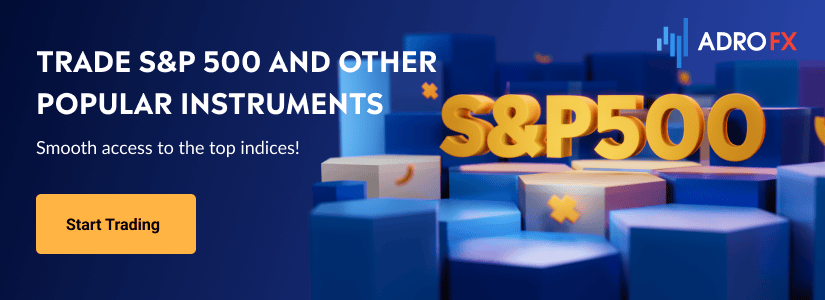Unveiling the Financial Market: Structures, Functions, and Strategic Perspectives

The financial market represents a complex ecosystem of institutions, instruments, and systems facilitating the buying and selling of financial assets. It encompasses several key markets, including the money market, capital market, foreign exchange market, and derivatives market, each serving distinct functions and participants. These markets collectively underpin the global economy by efficiently allocating capital, ensuring liquidity, and enabling price discovery.
Understanding the structure and functions of the financial market is pivotal for various stakeholders. For investors, it guides decisions on resource allocation. Policymakers utilize this understanding to shape regulations that foster market stability and transparency. Businesses benefit by strategically leveraging financial markets for risk management, capital acquisition, and operational planning. Ultimately, a well-functioning financial market drives economic growth by facilitating investment and trade across sectors.
Components of the Financial Market
The financial market comprises interconnected components, each essential for its overall functionality and economic impact. This section delves into the primary segments: the Money Market, Capital Market, Foreign Exchange Market, and Derivatives Market. Each plays a crucial role in enhancing liquidity, supporting capital formation, and managing risk. Let’s explore these components in detail.
Money Market
The money market is a segment of the financial market where short-term borrowing, lending, buying, and selling of financial instruments occur. These instruments typically have maturities of one year or less. The money market is characterized by high liquidity and low risk, making it a safe place for investors to park funds for short periods.
Common money market instruments include Treasury bills, commercial paper, certificates of deposit, and repurchase agreements. These instruments are used by governments, financial institutions, and corporations to manage their short-term funding needs. For instance, during periods of economic uncertainty, businesses often rely on commercial paper to meet short-term obligations without resorting to more costly long-term debt.
The money market plays a crucial role in the economy by providing a mechanism for managing short-term liquidity. It allows businesses and governments to meet their short-term obligations and manage cash flow efficiently. For investors, it offers a secure place to invest excess funds with the assurance of quick liquidity.
Capital Market
The capital market is where long-term debt and equity securities are traded. It provides a platform for companies and governments to raise long-term funds. The capital market includes both primary and secondary markets. In the primary market, new securities are issued and sold to investors, while in the secondary market, existing securities are traded among investors.
In the primary market, companies issue new stocks and bonds to raise capital. This process is facilitated by investment banks through initial public offerings (IPOs) and bond issuances. In the secondary market, securities that have already been issued are bought and sold among investors. Major stock exchanges, such as the New York Stock Exchange (NYSE) and NASDAQ, are examples of secondary markets.
The capital market features a variety of instruments, including stocks, bonds, and debentures. Stocks represent ownership in a company and entitle the shareholder to a portion of the profits. Bonds are debt securities issued by corporations or governments, promising to pay a fixed interest over a specified period.
The capital market is essential for long-term financing. It allows companies to raise the capital needed for expansion, research and development, and other long-term projects. For governments, it provides funds for infrastructure projects and other public investments. Investors benefit from the potential for higher returns compared to short-term investments.

Foreign Exchange Market (Forex)
The foreign exchange market, or forex, is a global decentralized market for trading currencies. It is the largest and most liquid financial market in the world, with a daily trading volume exceeding $6 trillion. Forex trading occurs over-the-counter (OTC) through a network of banks, brokers, and financial institutions.
Major currencies traded in the forex market include the US Dollar (USD), Euro (EUR), Japanese Yen (JPY), British Pound (GBP), Swiss Franc (CHF), Canadian Dollar (CAD), and Australian Dollar (AUD). These currencies are traded in pairs, with the value of one currency being quoted against another.
The forex market plays a pivotal role in global trade and investment. It facilitates the conversion of currencies for international trade transactions, enabling companies to buy and sell goods and services across borders. For example, a US-based company importing goods from Europe would use the forex market to exchange dollars for euros. It also allows investors to diversify their portfolios by investing in foreign assets and managing currency risk.
Derivatives Market
The derivatives market involves financial instruments whose value is derived from the value of an underlying asset, such as stocks, bonds, commodities, or currencies. Derivatives are used for hedging risk or for speculative purposes. Common types of derivatives include futures, options, forwards, and swaps.
Types of Derivatives:
- Futures
Contracts to buy or sell an asset at a predetermined price at a specified time in the future. - Options
Contracts that give the holder the right, but not the obligation, to buy or sell an asset at a set price before a specified date. - Forwards
Customized contracts between two parties to buy or sell an asset at a specified future date and price. - Swaps
Contracts in which two parties exchange cash flows or other financial instruments for mutual benefit.
Derivatives play a crucial role in risk management. They allow businesses and investors to hedge against price fluctuations, interest rate changes, and currency movements. For example, a company can use futures contracts to lock in the price of raw materials, protecting against price increases. Similarly, currency swaps can be used to hedge against exchange rate risk in international transactions.

Functions of the Financial Market
The financial market performs several critical functions that underpin the broader economy. One of the primary functions is price discovery, where the prices of financial instruments are determined through the interaction of buyers and sellers. This process relies heavily on the dynamics of supply and demand, ensuring that prices reflect the current market conditions and investor sentiment.
Another essential function of the financial market is providing liquidity, which guarantees that there are always buyers and sellers available for transactions. This liquidity is facilitated by market makers and brokers who help maintain the smooth functioning of the market by matching orders and ensuring trades can be executed efficiently.
The financial market also plays a crucial role in capital formation by enabling businesses to raise funds. Through mechanisms like the issuance of stocks and bonds, companies can secure the necessary capital to invest in growth and expansion, thereby driving economic development.
Risk management is another vital function of the financial market. Businesses and investors use various derivatives and hedging strategies to manage and mitigate potential risks associated with their financial activities. These tools are crucial for protecting against adverse price movements and ensuring financial stability.
Efficient allocation of resources is achieved by directing funds to their most productive uses. Financial intermediaries, such as banks and investment firms, play a key role in this process by channeling savings from individuals and institutions into investments that yield the highest returns, thereby optimizing the overall efficiency of the economy.
Participants in the Financial Market
The financial market consists of various participants, each playing a critical role in its functioning. Investors are a primary group, comprising both retail and institutional investors. Retail investors are individual participants who typically invest smaller amounts of money, often aiming for personal financial goals like retirement or education savings. In contrast, institutional investors, such as mutual funds, pension funds, and hedge funds, manage large pools of capital and employ sophisticated investment strategies to achieve their financial objectives.
Issuers are another key group, including corporations, governments, and other entities that raise capital through the financial market. Corporations issue stocks and bonds to finance their operations and growth, while governments issue securities like Treasury bonds to fund public projects and manage national debt.
Intermediaries play a crucial role in the financial market by facilitating transactions and providing various services. Banks, brokers, and investment funds act as intermediaries, helping to match buyers and sellers, offer investment advice, and manage portfolios. These entities ensure the market operates smoothly by providing liquidity and enabling efficient capital flows.
Regulators, including government agencies and regulatory bodies, oversee the financial market to ensure its integrity and protect investors. They establish rules and standards to prevent fraud, promote transparency, and maintain investor confidence. Regulatory bodies like the Securities and Exchange Commission (SEC) in the United States enforce these regulations, ensuring that all market participants adhere to established guidelines.

Market Infrastructure
The infrastructure of the financial market comprises several components that facilitate trade and ensure the smooth execution of transactions. Exchanges and trading platforms are central to this infrastructure. Stock exchanges, commodities exchanges, and electronic trading platforms provide venues where securities and commodities are bought and sold. These platforms play a crucial role in price discovery, liquidity provision, and ensuring transparent and orderly trading.
Clearing and settlement systems are vital for the completion of transactions. Clearinghouses act as intermediaries between buyers and sellers, ensuring that trades are executed correctly and that the transfer of securities and funds occurs seamlessly. They mitigate the risk of counterparty default and ensure that all parties fulfill their contractual obligations.
Information and technology have a profound impact on the financial market, revolutionizing how trading is conducted and information is disseminated. Advanced trading technologies enable high-speed transactions and algorithmic trading, enhancing market efficiency. Financial news and data providers play a critical role by delivering real-time information, market analysis, and insights that help investors make informed decisions. The integration of technology and information systems ensures that market participants have access to the data they need to navigate the complex financial landscape effectively.
Challenges and Developments
The financial market constantly evolves, facing various challenges and experiencing significant developments. Market volatility remains a prominent challenge, characterized by rapid and unpredictable fluctuations in asset prices. These fluctuations can be triggered by a multitude of factors, including economic data releases, geopolitical events, and changes in investor sentiment. The effects of market volatility can be far-reaching, impacting portfolio values and increasing the risk of losses for investors. To manage volatility, investors and fund managers often employ strategies such as diversification, hedging with derivatives, and maintaining a long-term investment perspective to mitigate short-term market movements.
Regulatory changes are another major area of focus in the financial market. Recent adjustments to financial regulations aim to enhance market stability, protect investors, and ensure fair trading practices. These changes can significantly impact market participants, requiring firms to adapt to new compliance requirements and operational standards. For example, regulations like the Dodd-Frank Act in the United States have introduced stricter oversight on financial institutions and trading activities, leading to changes in how firms conduct business and manage risk.
Technological advances continue to reshape the landscape of the financial market. The rise of financial technology (fintech) and algorithmic trading has transformed traditional trading methods, enabling faster and more efficient transactions. Innovations such as blockchain technology and the emergence of cryptocurrencies have introduced new avenues for investment and decentralized financial transactions. Blockchain’s transparent and secure ledger system promises to revolutionize various aspects of finance, from settlement processes to cross-border payments.
Globalization has led to the integration of financial markets across the world, creating a more interconnected global economy. This integration allows for the free flow of capital and investment across borders, promoting economic growth and development. However, it also means that domestic markets are more susceptible to external shocks and global economic trends. Policymakers and market participants must navigate this interconnected landscape carefully, balancing domestic economic policies with the influence of global financial dynamics. The impact of globalization is evident in the way financial crises can spread rapidly from one market to another, underscoring the need for coordinated international regulatory frameworks and cooperative economic strategies.
Conclusion
In conclusion, the financial market's multifaceted structure and critical functions underscore its role as a cornerstone of global economic stability and growth. Understanding its intricacies, from market segmentation to regulatory oversight and technological innovation, is imperative for stakeholders navigating this dynamic landscape. By facilitating efficient capital allocation, promoting innovation, and managing risks, the financial market remains pivotal in driving economic prosperity worldwide.
About AdroFx
Established in 2018, AdroFx is known for its high technology and its ability to deliver high-quality brokerage services in more than 200 countries around the world. AdroFx makes every effort to keep its customers satisfied and to meet all the trading needs of any trader. With the five types of trading accounts, we have all it takes to fit any traders` needs and styles. The company provides access to 115+ trading instruments, including currencies, metals, stocks, and cryptocurrencies, which make it possible to make the most out of trading on the financial markets. Considering all the above, AdroFx is the perfect variant for anyone who doesn't settle for less than the best.










